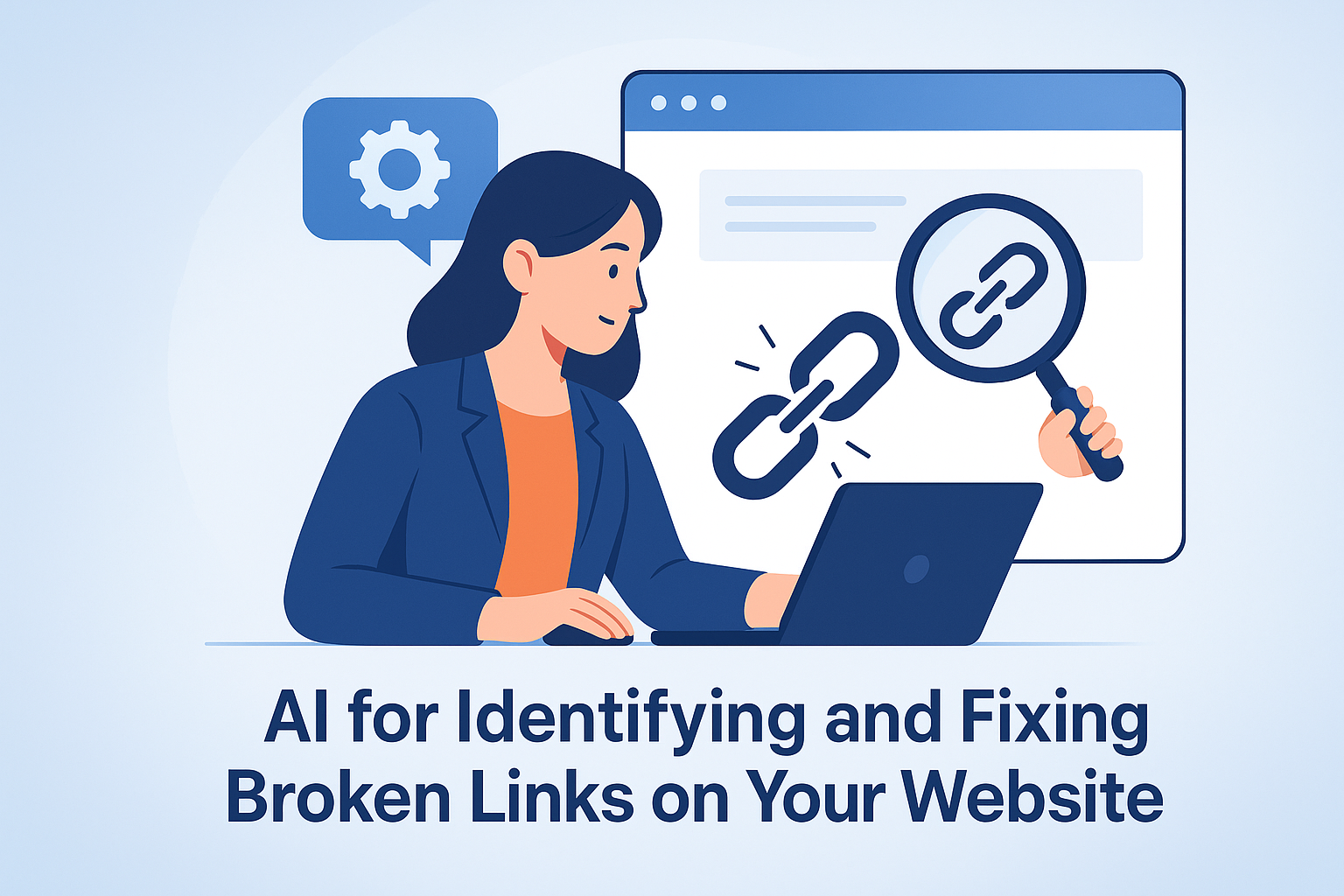Page speed isn’t just about faster load times—it’s about better rankings, lower bounce rates, and higher conversions. And when it comes to slowing down your site, images are often the number one culprit.
Large, unoptimized images create bloated pages that frustrate users and drain your SEO potential. But the good news is that AI can now automate image compression—at scale, in real time, and without sacrificing visual quality.
In this guide, you’ll learn:
- Why image optimization is crucial for SEO and UX
- How AI-driven tools streamline compression workflows
- Which image formats, sizes, and delivery methods work best
- How to integrate image optimization into your DIYSEO strategy
- How DIYSEO GPT can help detect and prioritize speed issues across your site
Why Image Optimization Matters for SEO
Let’s break down why image compression is a core part of technical SEO and performance optimization.
🚀 Faster Load Times
Heavy images are one of the biggest contributors to slow-loading pages—especially on mobile. Google prioritizes speed in its ranking algorithms, and users expect a page to load in under 3 seconds.
🔍 Improved Rankings (Core Web Vitals)
Optimized images contribute to better Largest Contentful Paint (LCP) scores—a major component of Google’s Core Web Vitals, which directly affect search rankings.
📉 Lower Bounce Rates
Slow pages lead to abandonment. Every second of delay in load time can reduce conversions by 7% or more.
📈 Better User Experience
A fast, visually rich site enhances trust, engagement, and time on page—all of which feed positive SEO signals.
What Is Image Compression?
Image compression is the process of reducing the file size of images while maintaining acceptable visual quality. It can be:
- Lossy (some data discarded for higher compression)
- Lossless (no quality loss, but less compression)
Compression works by eliminating unnecessary data, using efficient formats, resizing dimensions, and optimizing delivery.
AI vs. Traditional Image Compression
Traditionally, optimizing images meant:
- Manually resizing files
- Running them through external tools (like TinyPNG or Photoshop)
- Re-uploading them to your CMS
- Hoping you didn’t ruin the quality
AI simplifies and automates all of that.
Benefits of AI-Driven Image Optimization
| Feature | AI Tools | Traditional Tools |
|---|---|---|
| Bulk compression | ✅ | 🚫 |
| Smart format selection | ✅ | 🚫 |
| Visual quality preservation | ✅ | Depends |
| Real-time compression | ✅ | 🚫 |
| CMS integration | ✅ | Some |
| Ongoing monitoring | ✅ | 🚫 |
AI can compress thousands of images, automatically choose between formats (like WebP or AVIF), and adapt compression levels based on context—all without manual intervention.
Step-by-Step: Automating Image Compression with AI + DIYSEO
🔍 Step 1: Audit Image-Heavy Pages with DIYSEO GPT
Start with a performance audit of your site’s slowest-loading pages.
Prompt:
“Audit my website and identify pages with large, unoptimized images affecting load time and Core Web Vitals.”
DIYSEO GPT analyzes:
- LCP score and page size
- Image file formats and dimensions
- Lazy loading setup
- Mobile vs desktop performance
The tool returns a prioritized list of pages to optimize, with suggestions for each.
📐 Step 2: Identify Oversized or Uncompressed Images
Once the pages are flagged, ask:
“List the top images on this page that are slowing it down. Include file size, dimensions, and optimization suggestions.”
DIYSEO GPT will return:
- File names/paths
- Current size (e.g., 1.6MB)
- Suggested new size (e.g., 250KB)
- Recommended format (e.g., convert to WebP)
- Whether to resize, compress, or lazy load
🔧 Step 3: Automate Compression with AI Tools
You can then use AI-powered image optimization platforms that integrate with your CMS, such as:
- ShortPixel AI
- ImageKit
- TinyPNG Pro
- Cloudinary AI
- Optimole
- Shopify/WooCommerce-integrated AI image plugins
These tools use machine learning to:
- Compress images based on context and content
- Automatically convert to next-gen formats (WebP, AVIF)
- Resize for different devices (responsive image sets)
- Enable lazy loading
- Cache optimized versions on CDNs
You no longer have to manually resize or optimize images one-by-one.
✍️ Step 4: Replace and Re-upload with SEO AI Writer Assistance
In some cases, you may need to re-upload compressed or resized images manually—especially on blog posts or static pages.
Prompt SEO AI Writer:
“Rewrite the image captions and surrounding copy for these newly compressed images to enhance relevance and SEO.”
This ensures your visual content stays engaging and keyword-aligned, even after compression.
🔁 Step 5: Re-Audit and Measure Results
Once your images are optimized, ask DIYSEO GPT:
“Re-audit the pages I’ve optimized. Has LCP or total load time improved?”
You’ll receive updated metrics and recommendations, including:
- Pages that still need optimization
- Improvements in mobile and desktop performance
- Recommendations for further asset compression or delivery enhancements
Advanced AI Strategies for Image Optimization
Here are some advanced, AI-enhanced strategies you can implement next:
✅ Auto-Format Switching
Ask GPT:
“Convert all hero images on blog posts to WebP where supported and JPEG fallback where not.”
AI tools will detect browser compatibility and handle delivery logic via <picture> tags or CDNs.
✅ Content-Aware Compression
Modern tools like Cloudinary use AI to compress more in non-focus areas of an image (e.g., background), preserving quality where it matters most (e.g., faces or text).
Ask:
“Compress this image to 200KB while preserving text clarity.”
✅ Lazy Loading and Prioritization
AI can help you lazy load non-critical images and preload above-the-fold visuals for a perfect balance of speed and UX.
Prompt:
“Implement lazy loading for all product gallery images but preload the first visible image.”
✅ Bulk Optimization in Content Libraries
Have hundreds of old images? Use AI to bulk compress and rename for better SEO.
Prompt:
“Compress all blog images older than 12 months to under 300KB and rename using this format: [keyword-topic-date].webp.”
How Image Optimization Boosts Rankings and Conversions
Once optimized, you’ll likely see improvements in:
| Metric | Benefit |
|---|---|
| PageSpeed / LCP | Higher Core Web Vitals scores and Google rankings |
| Bounce Rate | Lower due to faster load |
| Conversions | Higher thanks to reduced friction |
| Engagement | Better performance across devices and networks |
| Mobile SEO | Faster performance for mobile-first indexing |
You can reinforce these gains by using Link Marketplace to build backlinks to your now-optimized, lightning-fast pages.
Optimization Workflow Summary
| Step | Tool | Action |
|---|---|---|
| Audit performance | DIYSEO GPT | Flag image-heavy slow pages |
| Identify image issues | GPT | List uncompressed files |
| Automate compression | External AI tools | Use Cloudinary, TinyPNG Pro, etc. |
| Optimize content | SEO AI Writer | Refresh image captions and ALT text |
| Validate improvements | GPT | Re-audit and confirm performance gains |
| Boost authority | Link Marketplace | Build links to high-performing pages |
Final Thoughts
Page speed isn’t just a technical metric—it’s a ranking factor, a UX signal, and a conversion catalyst. And in most cases, image bloat is the biggest drag on your site’s performance.
By using AI to:
- Automatically detect unoptimized images
- Compress them with visual fidelity
- Streamline image delivery and lazy loading
- Enhance contextual relevance with SEO-friendly copy
- Track improvements in real time
…you transform a major SEO challenge into a competitive advantage.
With DIYSEO GPT, SEO AI Writer, and a smart compression strategy, you can automate your way to a faster, leaner, and more powerful website.
Frequently Asked Questions
1. How does AI improve image compression for better page speed?
AI enhances image compression by utilizing advanced algorithms that analyze and process images more effectively than traditional methods. These algorithms can identify and retain essential visual features while removing unnecessary data, thus reducing the file size without compromising quality. AI-driven image compression tools can optimize images at a much faster rate and with greater accuracy. As a result, web pages experience quicker load times, leading to an improved user experience and potentially better SEO rankings. The AI models are constantly learning and adapting from millions of images, enabling them to apply the most efficient compression techniques tailored to various types of images, whether they are photos, graphics, or complex visuals.
2. What is the role of AI in automating the image compression process?
AI automates image compression by employing machine learning models that can process bulk images efficiently without human intervention. Once these AI models are trained, they can automatically analyze images, select the optimal compression method, and apply necessary transformations to minimize file size while maintaining image quality. This automation means that website administrators don’t need to manually adjust each image, saving both time and effort. Furthermore, AI can differentiate between types of image content, applying varied compression techniques to different images based on factors like color scheme and noise levels. This readiness to adapt and respond to dynamic image requirements makes the entire process more streamlined and less prone to human errors.
3. Can AI compression noticeably reduce load times for websites with a lot of images?
Absolutely, AI-driven compression can have a significant impact on reducing load times for websites, especially those heavily reliant on image content. Images often constitute the bulk of data on web pages, and inefficiently compressed images can drastically slow down a site. By compressing images intelligently with AI, file sizes are reduced significantly, ensuring that images load quicker without losing visual quality. Consequently, the total page load time decreases, which can lead to reduced bounce rates and increased user engagement. This is particularly beneficial for e-commerce sites, where every second of load time can impact sales and conversions. Users expect pages to load in seconds, and AI helps achieve this benchmark by optimizing one of the most critical bottlenecks—image data.
4. How does AI compare to traditional image compression techniques?
AI surpasses traditional image compression techniques in several ways. Traditional methods, such as JPEG or PNG compressors, apply general rules for reducing file sizes, often at the expense of image quality. They don’t account for the specifics of individual images, which can lead to less than optimal results. In contrast, AI uses machine learning to understand the intricate details of each image, including color patterns, image textures, and subject importance, to apply more sophisticated compression models. This results in higher quality images with smaller file sizes compared to rudimentary compression methods. Additionally, AI models continue to improve over time, learning from new data and improving their compression strategies, whereas traditional methods remain static and limited by their foundational algorithms.
5. What future advancements can we expect from AI in terms of image compression?
The future of AI in image compression is promising, with several advancements on the horizon that could further revolutionize web performance. Researchers and developers are exploring more granular AI models that use deep learning techniques to optimize image compression even further. We anticipate AI being able to personalize compression settings based on user-specific data, such as device type, browser usage, and network quality. Additionally, advances in AI neural networks might enable real-time image compression and streaming without the need for intermediate storage, which could vastly improve both web page and app performance. These developments promise to bring even smarter, leaner file sizes that preserve image quality better than ever, continually pushing the boundaries of what was previously thought possible in web optimization.



